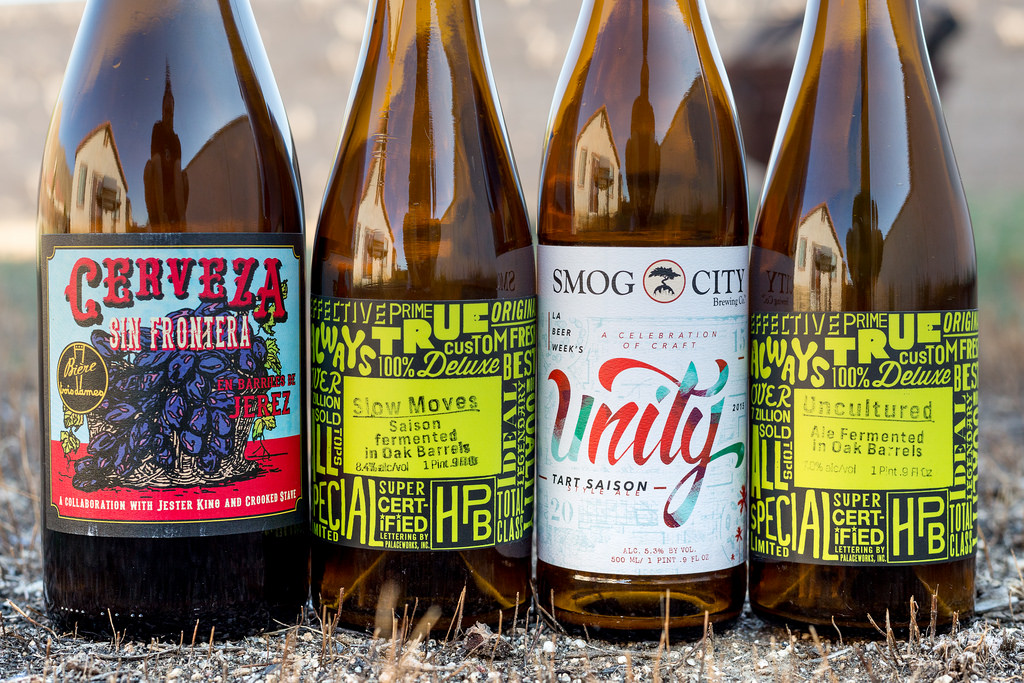Start 14-Day Trial Subscription
*No credit card required

The Role of Brettanomyces in Craft Brewing
This is the continued story of an anthropomorphized yeast who rose to the fore of modern brewing after being discovered by a Guinness talent scout. Through bold decisions and stinky notoriety, he has carved himself a healthy chunk of fame and a coveted role in petri dishes of brewers around the world. Join us as we investigate Mr. Brettanomyces and his unorthodox ascent to brewing heroism.
Brewing With The Brett Man
Mr. Brett is a yeast of true individuality, but if you cross him, he could trash your entire brewing operation and cost you a fortune. If you're going to brew with Brett, your best bet is to keep him well removed from any equipment you plan on brewing with regular yeast. If not, as you might expect, sanitation is the name of the game. From a logistics standpoint, the more Mr. Brett becomes involved in your project, the longer it's going to take, if you're looking for the full tangy and attenuated experience.
Most fermentation is done mostly with standard saccharomyces, but 100% Brett experimentation is becoming increasingly common. In spontaneous fermentation, Brett comes to life after standard yeast is done fermenting, or in a more controlled setting Brett will be added in after primary fermentation.
When used in IPAs, Brett is used in primary fermentation, which gives it more room to assert its character, which includes a boatload of fruity esters along with the barnyard aromas. When combined with hops with tropical qualities, you get a coordinated flavor assault that can generate some amazing results.
Generally in Brett IPAs, the barnyard aspects are discouraged, which requires gentle handling of Mr. Brett. When he gets stressed, things start to get funky, so brewers carefully watch their yeast cell-counts when brewing with our hero.
This style is also one to drink immediately, as both hops and Monsieur Brett can go south after time, but even that assertion comes with a caveat -- some brewers report that since Brett continues to ferment in the bottle, it absorbs oxygen and keeps the hops from oxidizing.
Brett-Ucation
Getting into Brett brewing isn't something you stumble into. There's serious science behind the handling of this fickle fellow, and if you're going to do it right, you need to know your stuff. The gap between an introductory article such as this and the true magic behind the curtain is vast and full of esters.
Thankfully, the brewing community is born of collaboration, and even the masters are willing to help out sort fact from fiction. Consider reading up on Chad Yakobson, who helms Crooked Stave and wrote his master's thesis all about our pal Mr. Brett. (Check it out here: Pure Culture Fermentation Characteristics of Brettanomyces Yeast Species and Their Use in the Brewing Industry)

We should expect to see brett styles expanded upon in the BJCP, along with brewing-at-large. (Photo Credit: Four Brewers)
The more technical aspects of working with Brett you've got in your toolkit, the less room for error you will leave. However, the depth of the subject shouldn't be a discouraging factor, as brewing began with accidents and experimentation, both of which will always be an integral part of the process. Not to oversimplify things, but you could catch a game-changing Brett strain anywhere, anytime. A commercially cultivated Custersianus brett strain was isolated from a specific brand of South African millet beer, for instance.
Three Common Esters
Yakobson's dissertation identified three main esters which Brett generally summons: ethyl acetate, ethyl caproate and ethyl caprylate. The latter two were produced at "levels previously unseen in beer," according to Yakobson.
Ethyl Acetate: This ester is described as having flavors of nail varnish, acetone and solvent, and would be considered an off-flavor in high concentration.
Ethyl Caproate: This guy isn't so bad. He's got notes of fruits, clove, Camembert cheese, milk, champagne and Bourbon vanilla. He's even commonly used in the perfume industry.
Ethyl Caprylate: Similar to caproate, ethyl caprylate also has notes of cheese, along with wheat bread, port wine, plum brandy, sparkling wine and a range of fruits. It's a common food flavoring additive, so getting it in beer naturally is certainly a worthwhile goal.
Bretting on the Future
If you've masterfully crafted a Brett beer, you know there's a lot of potential for potent, luscious and clean flavor.
We should expect to see Brett styles expanded upon in the BJCP, along with brewing-at-large. It's relatively uncharted territory, which allows for a ton of creativity and expertise -- we may be seeing "Hop/Ester Blender" as a title before long. Even more exciting for the aspiring brewer, Brett puns have not been beaten to death quite as hard as hop puns, meaning you can still be first in line for some verbal creativity.
Yes, Brett the Hitman Tart has been taken by multiple breweries, and Mikkeller's Brett Mikkel's IPA is a clever addition, but there's still hope, right? What about "Brett and Ernie's Sesame Ale?" Or maybe "Brettin' to the Oldies?" "Brett Your Palate?" "Suffrage-Brett City?" I'll see myself out. Stay tuned for more on Mr. Brett and his playboy lifestyle.



